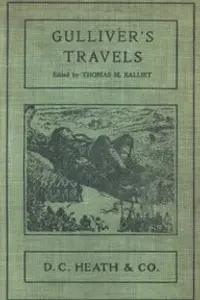Summary
Jonathan Swift’s Gulliver’s Travels (1726) is a satirical novel disguised as a travel narrative, following the adventures of Lemuel Gulliver, an English surgeon who becomes a shipwrecked voyager exploring strange and distant lands.
Across four journeys, Swift uses Gulliver's encounters with bizarre civilizations to satirize human nature, politics, science, and society.
Lilliput – Gulliver lands among a race of six-inch-tall people who are embroiled in petty political disputes.
Their ridiculous conflicts parody the triviality of British politics and court rivalries.
Brobdingnag – In a land of giants, Gulliver is the tiny one, and his experiences here challenge his pride in European civilization.
The giant king bluntly critiques England’s government and ethics.
Laputa and other islands – A voyage to a floating island inhabited by impractical scientists and philosophers offers a scathing critique of abstract thinking disconnected from reality.
Houyhnhnms and Yahoos – Gulliver meets a race of intelligent, rational horses (Houyhnhnms) and their degenerate human-like servants (Yahoos).
Disgusted by humanity’s brutishness, Gulliver becomes alienated from his own kind.
